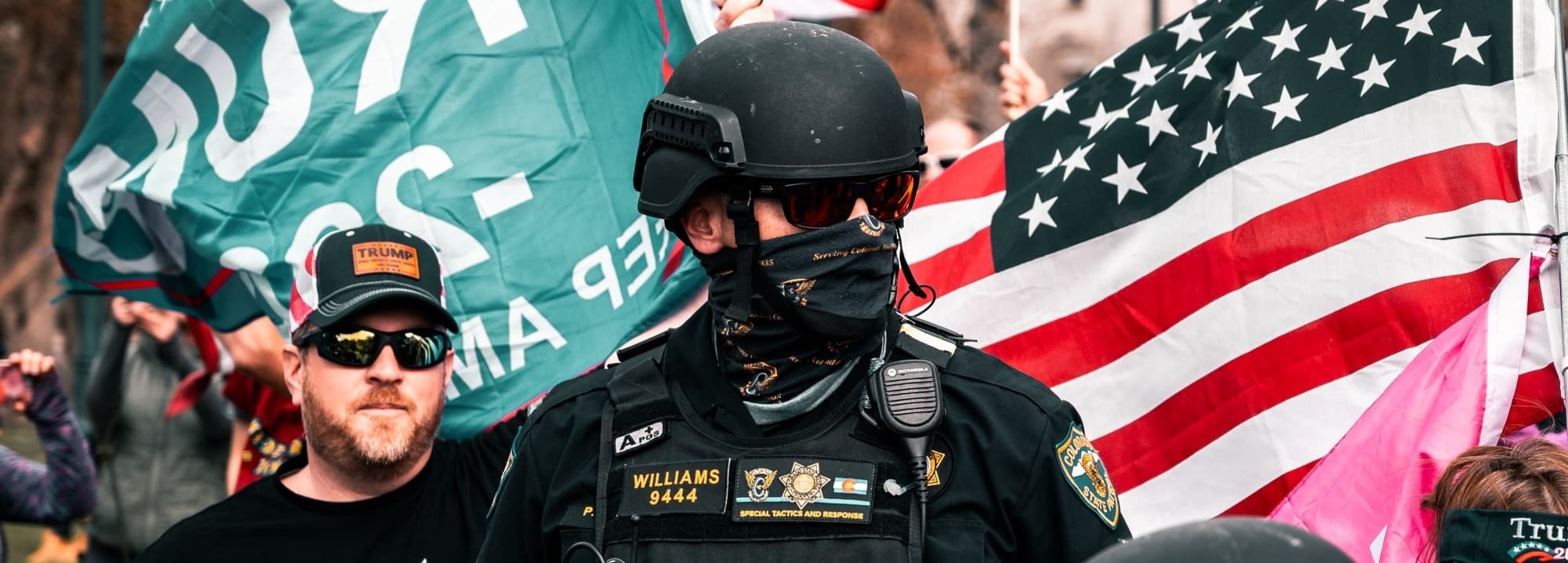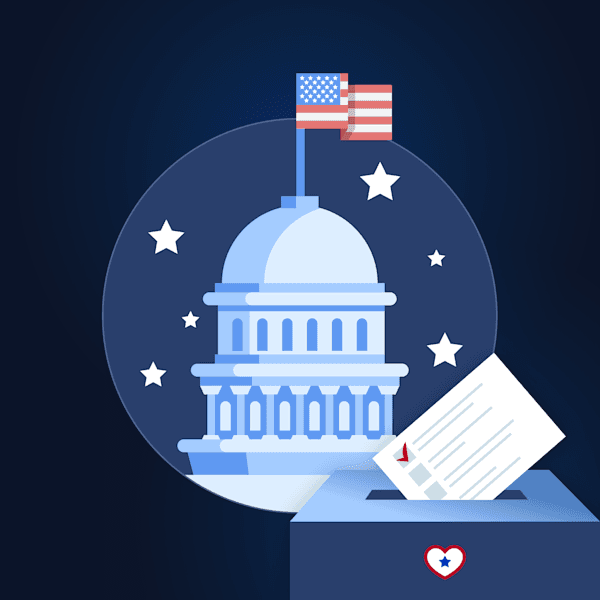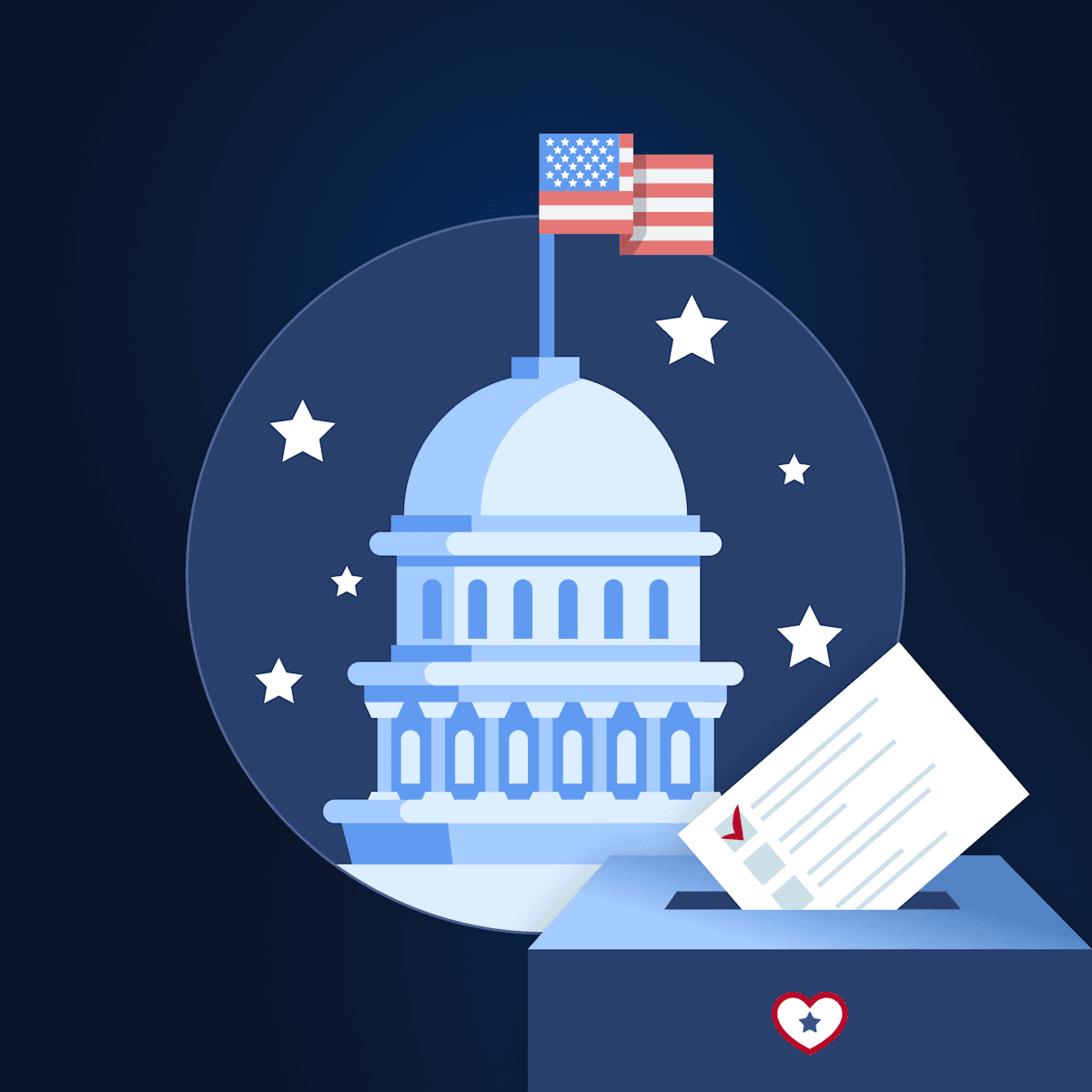
Political Violence: The Darker Side of America's Polarization
Buried deep in the heart of American democracy lies the growing and unsettling trend of political polarization. This is not only apparent in terms of differing ideologies, but also in its evolution toward a more menacing form: political violence.
The escalation of such violence is not merely a symbol of deep-seated ideological differences. It’s a symptom of a democracy in distress.
Read on as we explore the alarming rise of political violence in the United States and the factors that contribute to it. We’ll also discuss how it may be possible to reverse this trajectory toward violence with the potential healing powers of independent politics and bipartisanship.
Ideology and Political Violence in America
The roots of political polarization in America are as old as our country itself, ranging from the Federalist and Anti-Federalist debates to the Civil War, and carrying on through the tumultuous 1960s.
However, the current level of animosity includes a unique and alarming twist. According to research, there has been a startling increase in the acceptance of political violence.
In fact, a significant percentage of Americans across the political spectrum now see it as a justifiable means to achieve political ends.
According to a report released by the Public Religion Research Institute (PRRI), less than one quarter of Americans polled (22%) feel that the country is headed in the right direction. In fact, 90% of Republicans and 81% of independents think that we’re going in the wrong direction. Democratic voters are a little more optimistic. Only 59% of those who identify as Democrats agree with that statement.
The general feelings of doom for our country’s future aren’t the only consensus that breaks down along ideological lines:
67% of Republicans feel that our best days are behind us, compared to Independents (55%) and Democrats (35%).
48% of Republicans think that some rule-breaking among leadership is the answer, while 38% of Independents and 28% of Dems agree with that line of thinking.
More alarming is the attitude that political violence is the best way forward. Since 2021, the percentage of Americans who think that the situation warrants political violence rose from 15% to 23%. The ideological split on that issue is:
33% of Republicans
22% of Independents
13% of Democrats
That breakdown also expresses an increase among each demographic over the past two years.
Related to both political violence and the chasm that separates ideologies is the subject of gun access. Although 48% of Americans prioritize a candidate’s position on guns, the reasons for being pro or con gun laws depends on whether you’re a strict 2nd amendment supporter or in favor of stricter gun legislation.
For the most part, overall perceptions about whether political violence is acceptable or not run along racial, religious, and ideological lines, with older, white protestants feeling the most negativity toward the direction of the country, people of color being divided in their assessments, and those who are religiously and/or politically unaffiliated feeling the most hopeful.
The more likely respondents were to receive their news from social media or right-leaning media outlets, the more likely they were to have negative feelings toward America’s current state and future prospects.
Party Affiliation and Political Division
Polling conducted by the University of Virginia Center for Politics found that more than 80% of supporters of Joe Biden and 84% of Trump supporters see members of the other party as a “clear and present danger to democracy.” Increasingly, they also view supporters of the “other side” as an existential threat to the American way of life.
These shifts in mindset, perception, and acceptance of political violence as a solution are not merely enumerations of cold statistics; they’re a reflection of a society teetering on the edge of aggressive divisiveness.
Recent incidents, such as the storming of the Capitol, as well as armed threats to state houses across the country, serve as stark reminders of the physical manifestation of this ideological divide.
But, beyond these headline-grabbing events, you can find countless other instances of politically motivated harassment, intimidation, and violence that are eroding the nation's democratic fabric.
For example, individual members of Congress and their families have increased personal security measures in the wake of death threats, stalking, and attempted violence. This goes beyond harassment and threats via voicemail, text messages, and menacing social media posts when it bleeds into real-world events.
Consider events like the attack on former House Speaker Nancy Pelosi’s husband and the plot to kidnap and try Michigan governor, Gretchen Whitmer, for treason over the state’s COVID response. These acts have been ridiculed, minimalized, and even mocked by lawmakers on the right and their supporters.
For the first time, poll workers have had to undergo active shooter training in anticipation of potential violence at the polls. Self-appointed and armed “poll watchers” showed up at ballot drop boxes around the country in the runup to the 2022 midterm elections.
In an attempt to both-sides the issue of political violence, those who are ratcheting up such dangerous rhetoric attempt to equate kidnapping plots, physical attacks, and barely concealed calls to arms with sometimes chaotic, but valid, protests and civil unrest.
There have also been increases in threats of violence against lawmakers and law enforcement officers in the wake of misinformation about the results of the 2020 presidential election.
The “Othering” of America
Political violence manifests in many ways, but the reason behind it often boils down to a sense of entitlement and loss. One group feels that extending rights to others means that something is being taken away from them. Rather than pinning the loss of jobs to things like technology and outsourcing, the perpetrators of such policies, who benefit financially, point the finger at others.
The “other” is usually a group that is easily identifiable from the masses by virtue of their skin tone or religion. Consider the circumstances that led to our civil war, the chaos on the streets during the civil rights era, and the violence we’re witnessing now.
Some “leaders,” abetted by the media, foster this sense of entitlement and loss among populations who are affected by economic and social upheaval. Yet, they continue to vote against their own interests for the very persons responsible for the current state of America.
This vitriol extends to allies who stand up to the racism, sexism, and violent rhetoric as those who fan the flames talk incessantly about “taking their country back” from their fellow Americans.
It’s tempting to blame Donald Trump for the current level of polarization in America. However, he’s merely a human manifestation of problems that have been brewing in this country for a long time.
However, he is more than willing to leverage the level of discontent for his own gain, and others in his party are more than willing to try and ride his coattails to greater levels of power and prosperity at the expense of everyday Americans.
Analysis of Political Violence
The rise in political violence is a complex phenomenon, stemming from various causes. One primary factor is the increasing social media echo chamber, where extreme views are amplified and moderate voices are drowned out.
The Information Age has devolved into an Era of Misinformation and heightened emotional rhetoric. This has fueled a sense of urgency and desperation in some, transforming political opponents into public enemies.
The psychological impact is profound.
Individuals on both sides of the political divide increasingly view each other with suspicion and contempt, leading to a dehumanization of the 'other.' This mentality paves the way for justifying violence.
The escalation poses a societal threat to the foundational principles of democracy, where differing opinions are usually settled by ballots instead of bullets.
A comparative look at other countries shows that political violence is not unique to the United States.
However, the American experience is distinct in its intensity and the centrality of its democratic institutions. Countries like Canada and those in Western Europe, while facing their own polarizations, have generally managed to keep political disagreements within the bounds of civil discourse.
Independent Politics and Bipartisanship as a Solution
In the midst of all this turmoil shines a beacon of hope: the potential of independent politics and bipartisanship. These two factors, which empower political opponents to find common ground, offer a pathway to mitigate the extremes fueling political violence.
History is filled with examples where bipartisanship has resolved seemingly intractable conflicts. The Civil Rights Act of 1964, for example, was a product of cross-party collaboration. More recently, bipartisan efforts have been crucial in addressing national emergencies like natural disasters and terror attacks.
These examples demonstrate how bipartisanship can not only bridge ideological divides, but also restore faith in the political process. One publication even considers the current trajectory a good thing, considering that periods of social and political unrest have historically led to long periods of progress and relative peace once the dust had settled.
By focusing on shared goals and mutual respect, independent politicians and their supporters can lower the temperature of political discourse and create a space where differences are discussed and resolved peacefully.
Final Thoughts
The alarming rise in political violence in the United States is a symptom of the broader issue of political polarization. However, it’s not an irreversible condition.
The statistics, while concerning, also serve as a wake-up call. When political leaders, policymakers, and citizens recommit to the principles of democracy, we’ll be better positioned to settle our differences through dialogue and mutual respect instead of violence.
The path forward requires a concerted effort to embrace independent politics and bipartisanship. It also demands a willingness to listen, to compromise, and to see the humanity in those with whom we disagree.
While the challenges are significant, the promise of a more united and peaceful America is a goal worth striving for. In the end, it’s not just about overcoming political violence. It’s about reaffirming the strength and resilience of American democracy.
Join Us on a Better Path Forward
At GoodParty.org, we believe that the American dream is still possible if we ditch partisan politics and usher in a new spirit of independence and cooperation. If you’re ready to fight for a political system that works for all Americans, join us in our mission to end the divisive duopoly that’s tearing our country apart.
Photo by Colin Lloyd on Unsplash

